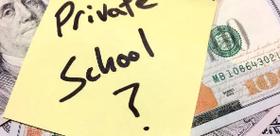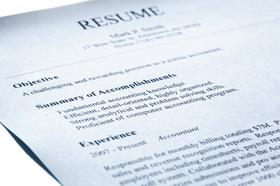What Is a Private School? An Updated Guide for 2025
In a world where educational options continue to expand and evolve, many families are asking: what exactly is a “private school”? This article defines the term, explains how private schools operate, explores current data and trends through 2025, and offers guidance for parents and students trying to decide whether a private school is the right choice.
1. Defining a Private School
At its core, a private school is a non-public K-12 educational institution that is operated independently of the government’s direct management of public school systems. In the United States, private schools are typically funded through tuition payments, private contributions and endowments, rather than relying primarily on local property taxes and state funding that support public schools. They may be religious or non-sectarian, single-gender or co-educational, day schools or boarding schools.
Unlike public schools, which must admit all students within a district, comply with state board regulations, and offer tuition-free education, private schools often set their own admissions criteria, policies and fee structures. Nonetheless, many private schools still adhere to state accreditation requirements or national independent-school accreditation standards.
2. Key Features of Private Schools
When considering private education, families should know several distinguishing features:
Tuition and fees: Private schools charge tuition. According to recent data, average U.S. private K-12 tuition in the 2020-21 school year was approximately $12,790.More recent median estimates suggest private elementary tuition of $26,800/year and middle grade $30,535/year in 2025.RaiseRight
Smaller size, different staffing model: Private schools tend to have smaller student bodies—more than 80 % of private schools enrolled fewer than 300 students in 2021-22.This smaller scale often allows for more individualized attention, smaller classes, and a more flexible curriculum.
Ownership and governance: Most private schools are operated by independent boards, sometimes affiliated with religious organizations or educational trusts. For example, about three-quarters of U.S. private schools have a religious orientation.
Admissions control: Private schools set standards for admission (e.g., entrance exams, interviews, prior academic performance, family engagement), which differentiates them from public schools that must admit all students in their district.
Regulatory environment: While private schools must meet certain state accreditation and safety requirements, they typically have more freedom than public schools to shape curriculum, teaching methods and program offerings.
Financial aid and scholarships: Many private schools offer need-based and merit-based financial aid to attract a diverse student body and reduce the barrier of tuition cost.
3. How Many Private Schools and Students? What the Data Shows in 2025
Understanding how large the private-school sector is helps families contextualize the role of private schooling. According to federal data:
There were about 29,730 K-12 private schools in the U.S. in 2021.
Roughly 4.7 million students were enrolled in private K-12 schools in fall 2021, which represented about 9 % of all K-12 students.
Enrollment share has remained relatively stable in recent years, although some choice-program analyses suggest slow growth.
Geographically and demographically, private schools are more common in urban and suburban settings—about 83 % of private schools are located in those areas.
4. Current Tuition and Cost Trends
One of the most frequent questions parents ask is: how much does a private school cost? While the range is vast, here are some updated figures for 2025:
National averages for private K-12 tuition previously hovered around $12,790 (2020-21).
More current median estimates for day private schools now show tuition at approximately $26,800 (elementary) and $35,105 (high school).
Tuition can vary widely by region, school type (religious vs non-sectarian), boarding vs day, and program offerings. For instance, boarding schools may charge $50,000+ annually when including room and board.
Families should always ask about the posted tuition versus the net cost after financial aid. Many schools offer substantial aid, lowering actual cost by tens of thousands of dollars.
It’s important to factor in additional fees (technology, activities, uniforms, capital levies) which may not always be included in the “tuition” figure.
5. Why Families Choose Private Schools
The decision to enroll in a private school is rarely only about cost. Common motivators include:
Academic environment: Many private schools emphasise rigorous college-preparatory curricula, low student-teacher ratios, and advanced or specialised programs (STEM, arts, international baccalaureate, etc.).
Values and community fit: Some families choose private schools to align with particular faith traditions, pedagogical philosophies (e.g., Montessori, Waldorf), or family culture.
Smaller size and individualization: With smaller schools and classes, many parents feel their child receives more personal attention and tailored support.
Resources and enrichment: Private schools frequently offer robust enrichment, extracurricular opportunities, leadership programs and global experiences.
School choice landscape: With the expansion of voucher programs and education-savings-account models in many states, families now may view private schools as a more accessible option. According to one estimate, over one million U.S. students were participating in a private-school choice program by the end of 2024.EdChoice
6. How Private Schools Differ from Public Schools
To make an informed decision, it helps to compare private schools with public schools on key dimensions:
| Feature | Private School | Public School |
|---|---|---|
| Tuition | Charged, often significant | Free (tax-funded) |
| Ownership/governance | Independently governed boards | Public district/board, state-run |
| Admissions | Selective admissions common | Must admit all district students |
| Class size / school size | Often smaller | Often larger; may have bigger student body |
| Curriculum flexibility | Higher flexibility; many specialised offerings | More uniform, state-mandated curriculum |
| Source of funding | Tuition, endowments, donors, families | Property/State/Federal taxes |
| Financial aid | Many schools offer grants and scholarships | Public schools provide free access; supplemental aid may apply |
| Special functions | May offer distinct programmes (religious, alternative) | Support for all neighbourhood students |
7. Accreditation and Quality Assurance
Because private schools are not always regulated in exactly the same way as public schools, accreditation becomes important. Many private schools are accredited by regional or national recognised bodies (for example, National Council for Private School Accreditation) to demonstrate adherence to standards of academic quality, governance, staffing and student outcomes. When researching, parents should verify a school’s accreditation status and review outcome measures such as student-teacher ratio, graduation rate, college matriculation and extracurricular options.
8. Trends and Policy Developments in 2025
The private-school landscape is changing in several noteworthy ways:
A growing number of states are implementing or expanding school choice programs, including vouchers and tax-credit scholarships, which allow public funds to be used for private schooling decisions. As of early 2025, 34 states have some form of private-school voucher program. Learning Policy Institute
While overall private school enrollment has been stable (around 9 % of K-12 students), alternative metrics suggest modest growth—especially in regions with strong choice policies.
Private schools are increasingly emphasising sustainability of enrollment, offering flexible program models (e.g., blended or hybrid instruction, specialised thematic schools) in response to competition and demographic shifts.
Tuition and operating costs continue to rise, driven by inflation, staffing pressures, facility upgrades and increased expectations from families for technology and global programming.
The average private school enrolment size is now around 177 students nationally for 2025-26, reflecting continued prevalence of smaller sized schools. Private School Review
9. Real-World Example: Choosing the Right Private School
Consider the case of the Smith family in suburban Virginia. Their daughter, Maya, is an eighth-grader seeking a high school experience with strong STEM offerings and small classes. They begin by defining priorities: class size under 20, robust robotics program, and solid financial aid. They search local day private schools, visit campuses, review tuition (which ranges from $28,000-$34,000/year in their region) and meet the admissions team. Meanwhile they review how scholarship and aid pools might reduce net cost to $15,000-$20,000. After careful planning, Maya enrolls in a private day school that offers advanced programming, a 12:1 student-teacher ratio, and supportive college advising. The family believes the investment is justified by the tailored fit and long-term outcomes.
10. Questions Every Parent Should Ask
When evaluating a private school, families should ask:
What is the net tuition after financial aid, rather than simply the sticker price?
What is the student-teacher ratio, average class size and school size?
What is the school’s mission and values, and do they align with your child’s needs and your family’s goals?
What are the outcomes (graduation rate, college enrollment, alumni achievements)?
What is the school’s admissions process, and what percentage of applicants are accepted?
Is the school accredited, and by which accrediting body?
How does the school support students academically, socially and during the transition from middle to high school to college?
Are there extracurricular programs, global experiences, leadership opportunities, and technology integration?
What is the financial aid policy, what percent of students receive aid, and on what basis?
How do you feel about the community and culture of the school during a campus visit?
11. When Private School May or May Not Be Right
It may be right if:
You are seeking a specialized academic environment or smaller community with tailored instruction.
Your child thrives in a more intimate, values-based or mission-driven educational setting.
Your family budget allows for net cost after aid, and you believe the long-term benefits justify the expense.
You value the flexibility and distinct offerings that some private schools provide, such as international programs or early college tracks.
It may not be right if:
The cost is prohibitive after considering the net cost and potential opportunity cost.
Your child prefers a large, diverse public school community with broad extracurricular offerings.
You live in a region where public schools offer strong programming and outcomes at no tuition cost.
You are seeking maximum flexibility, and the admissions or culture of private schools may feel restrictive.
12. Final Thoughts
In 2025, the concept of “what’s a private school” remains rooted in independent governance, tuition-funded enrollment, smaller size, admissions control and differentiated programming. What’s changed is the landscape: modest growth in private-school enrollment, expanded school-choice policies, rising tuition costs, and increasing competition. For families, the decision to choose a private school requires thoughtful research, clarity about cost and outcomes, and alignment between the school’s mission and the child’s needs.












